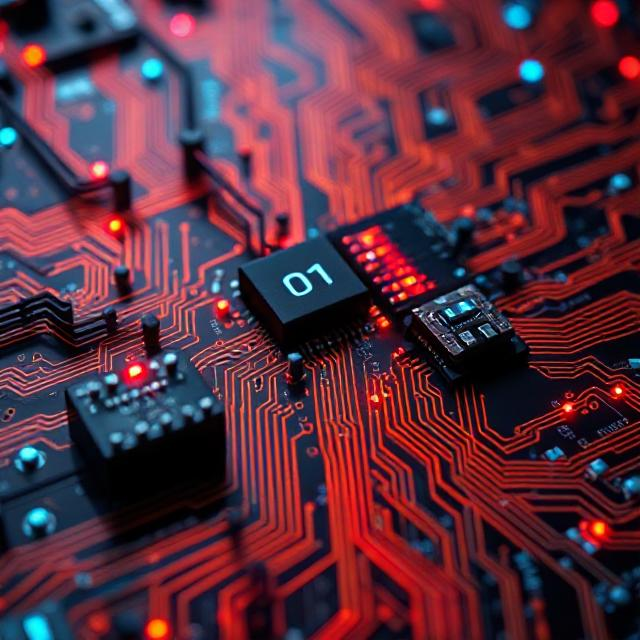As the demand for electricity continues to grow worldwide, improving energy efficiency and designing sustainable systems have become top priorities in engineering and technology. Power electronics—used to convert and control electric power—play a central role in this transformation. This article explores the importance of energy-efficient and sustainable design in power electronics, the strategies used, and the technologies that are shaping a greener future.

Why Energy Efficiency Matters in Power Electronics
Power electronics are used in nearly every modern electrical system: from power supplies and motor drives to electric vehicles (EVs), renewable energy systems, and data centers. However, these systems are not perfectly efficient. Power losses—mostly in the form of heat—occur during conversion and control processes.
Even small efficiency improvements in high-power applications can lead to:
-
Lower energy consumption
-
Reduced greenhouse gas emissions
-
Smaller, lighter systems
-
Lower operating costs
-
Extended equipment lifespan
Key Goals of Sustainable Power Electronics Design
-
Minimize Energy Losses
Use advanced materials and circuits to improve conversion efficiency. -
Reduce Size and Weight
Compact designs use fewer raw materials and reduce transportation and installation impacts. -
Improve Reliability and Longevity
Long-lasting systems reduce the need for replacements and waste. -
Enhance Recyclability and Material Sustainability
Use non-toxic, recyclable, and abundant materials wherever possible. -
Enable Renewable Energy Integration
Design systems that work efficiently with solar, wind, and energy storage.
Strategies for Energy-Efficient Power Electronics Design
1. Use of Wide-Bandgap Semiconductors (SiC, GaN)
-
Silicon Carbide (SiC) and Gallium Nitride (GaN) devices can operate at higher voltages, temperatures, and switching speeds.
-
Result: Lower switching losses, higher efficiency, smaller heat sinks, and compact designs.
2. High-Frequency Operation
-
Operating at higher frequencies reduces the size of passive components like inductors and capacitors.
-
Improves power density and reduces material use.
3. Soft Switching Techniques
-
Methods like Zero-Voltage Switching (ZVS) and Zero-Current Switching (ZCS) reduce stress on components and switching losses.
-
Boost overall system efficiency.
4. Optimized Circuit Topologies
-
Choose efficient designs such as resonant converters, interleaved structures, and multi-phase systems.
-
Balance power delivery with reduced losses.
5. Efficient Thermal Management
-
Proper heat dissipation improves reliability and allows components to run closer to their peak efficiency.
6. Digital Control and Smart Algorithms
-
Advanced microcontrollers and DSPs enable real-time energy monitoring and adaptive control to maximize efficiency.
-
AI-based control systems are emerging for predictive and self-optimizing performance.
Sustainable Design Practices
1. Lifecycle Thinking
-
Consider environmental impact from manufacturing through end-of-life.
-
Design for disassembly, recyclability, and minimal environmental harm.
2. Low-Impact Materials
-
Use lead-free solder, recyclable metals, and eco-friendly substrates.
-
Minimize use of rare or hazardous materials.
3. Energy Harvesting and Self-Powered Devices
-
Integrate low-power or self-powered circuits for IoT and remote sensing applications.
-
Use ambient energy sources (vibration, light, RF) to reduce battery dependency.
4. Modular and Scalable Systems
-
Modular designs reduce waste during upgrades or repairs.
-
Scalability helps match energy needs more precisely, avoiding overdesign.
Applications of Efficient and Sustainable Power Electronics
-
Renewable Energy Systems – MPPT controllers, inverters, and grid interfaces.
-
Electric Vehicles – Efficient onboard chargers, motor drives, and battery management.
-
Data Centers – High-efficiency power supplies and cooling systems.
-
Smart Grids – Bidirectional converters and smart meters.
-
Consumer Electronics – Lightweight, efficient adapters and portable power systems.
Challenges and Future Directions
-
Cost of advanced materials like SiC and GaN remains high, but prices are decreasing with demand.
-
Design complexity increases with higher efficiency goals.
-
Need for standardization in sustainable design metrics.
Future trends:
-
AI-optimized power conversion.
-
Additive manufacturing (3D printing) for custom cooling and packaging.
-
Green certification standards for power electronics.
Conclusion
Energy efficiency and sustainability are no longer optional in power electronics design—they are essential. Through innovative materials, smarter control techniques, and responsible design practices, engineers can create power systems that not only perform better but also contribute to a cleaner and more sustainable planet.











